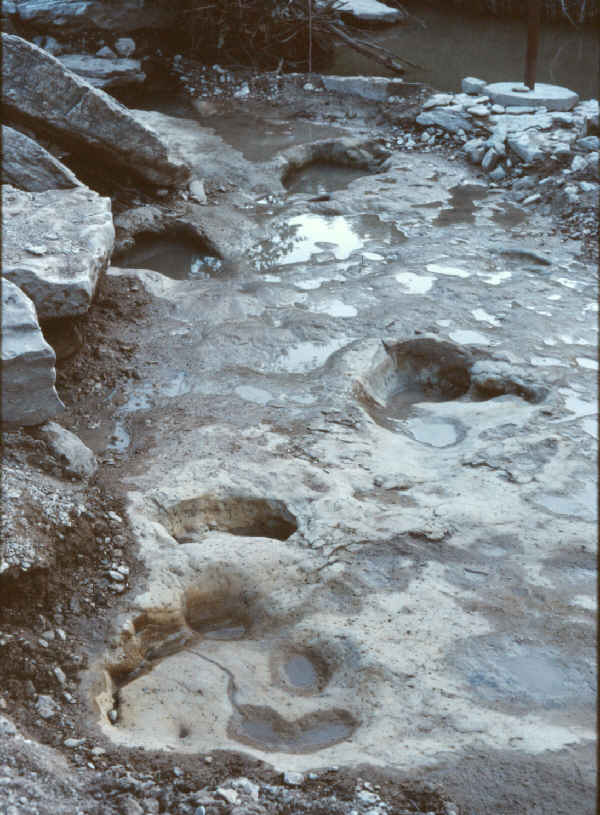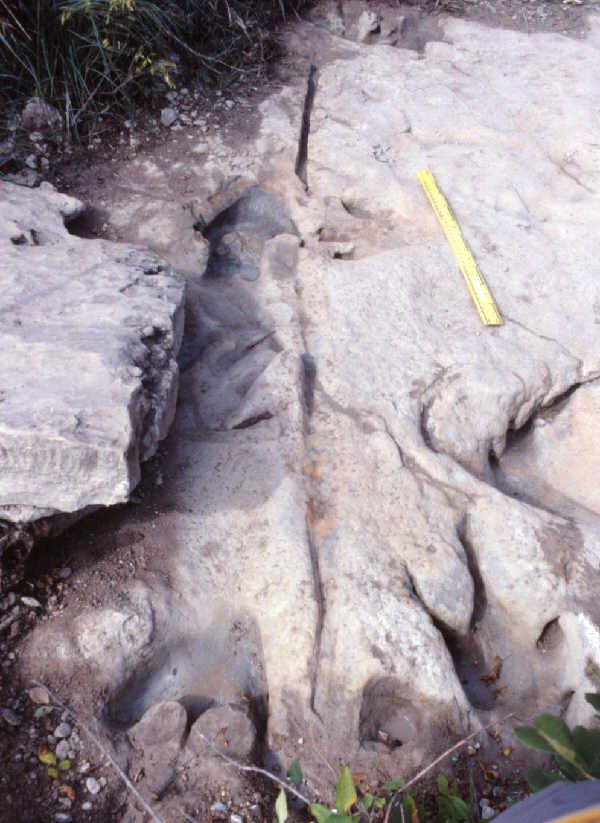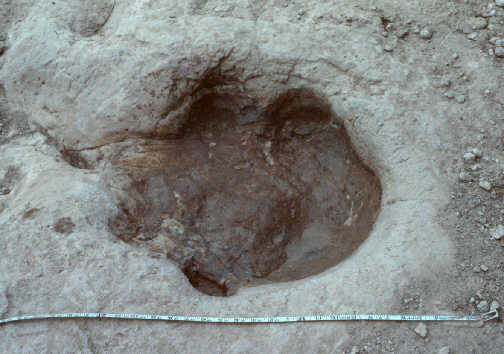
HGMS Dinosaur Tracks Field Trip
August 6, 2005
STOP 1, "Main" Track Site
Called Site #1 in park literature, this is the most frequently visited
track site, located across from the stepping stones on the northwest
side of the park. Watch
your step as you cross the stepping stones to get to the tracks.
The track bed hear sits a little higher than in most other
areas, allowing the prints to be viewed even when most
other sites are under water. The park makes an effort
to keep this site clean and dry, so that visitors always have
some real tracks to see. However, to minimize damage from
tourists, the tracks here are usually kept roped off, and
visitors may only view them from a distance.
There are two main sections of the main site. The one
near the west bank has been exposed since the park
opened. Several tracks originally exposed here have become
eroded severely or effaced altogether--including one of the best preserved
sauropod manus (front foot) prints known, and a curved
depression that might have been a tail "swish." However,
as the bank erods westward, new tracks are periodically exposed.
The variability in depth and clarity of the tracks may
be due to differences in the consistency of the sediment
where each foot was placed, the partular time that each
dinosaur walked (probably no more than days between each
trail) and the amount of erosion each marking has sufferred in
modern times.

|

|
The second area of the main site, which Ron Hastings and
I first uncovered in 1986, features several theropod
tracks and striding sequence of sauropod tracks. The
latter head south, like most sauropod tracks in the park,
and probably connects with one of R.T. Bird's trackways
farther upstream. Note that most of the sauropod
front prints are missing or incomplete as a result of
overlap or mud pushed from the rear prints. Also note the
narrow gauge of the trail, and the absence of a tail mark.
These common track features showed that most
early reconstructions of sauropods showing sprawling gaits
and dragging tails were incorrect, and that like other
dinosaurs, they placed their feet well under the body
and usually carried their tails aloft. The most interesting
feature on this site is an exception to the rule: a long rut
which might be a tail drag. It is straddled by two
theropod trails, making it difficult to determine whose
tail was dragging. The mark appears to continue into the
track area near the west bank. If this is a tail drag, it
might represent a sick or wounded animal.
The shelf next to the main site, whose surface is about
a meter above the main track bed, is full of erosional
undulations and karren solution pits. Many
tourists search among the random markings on
this surface for tracks, and some strict creationists have
claimed a number of "man tracks" here. However, there are no
real tracks on the shelf. Finding supposed prints
here is like finding faces in clouds. None of the
markings on the shelf show distinct and natural
print features, or occur in normal striding sequences.





